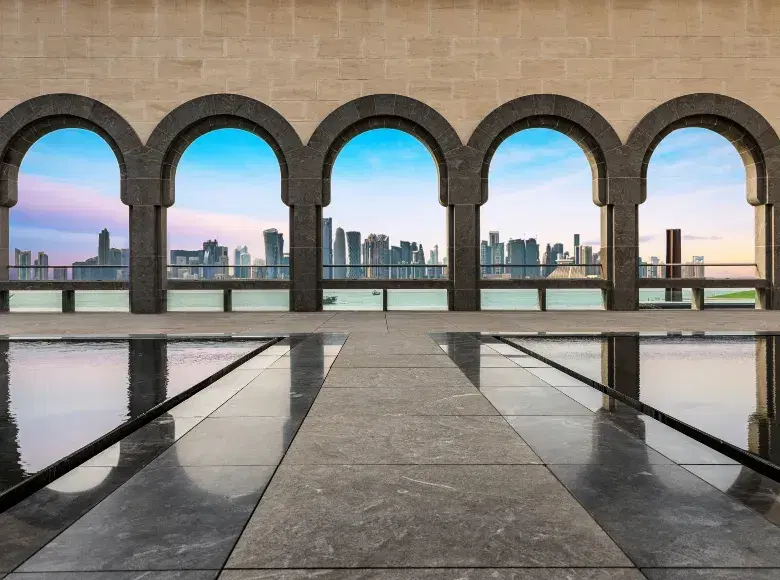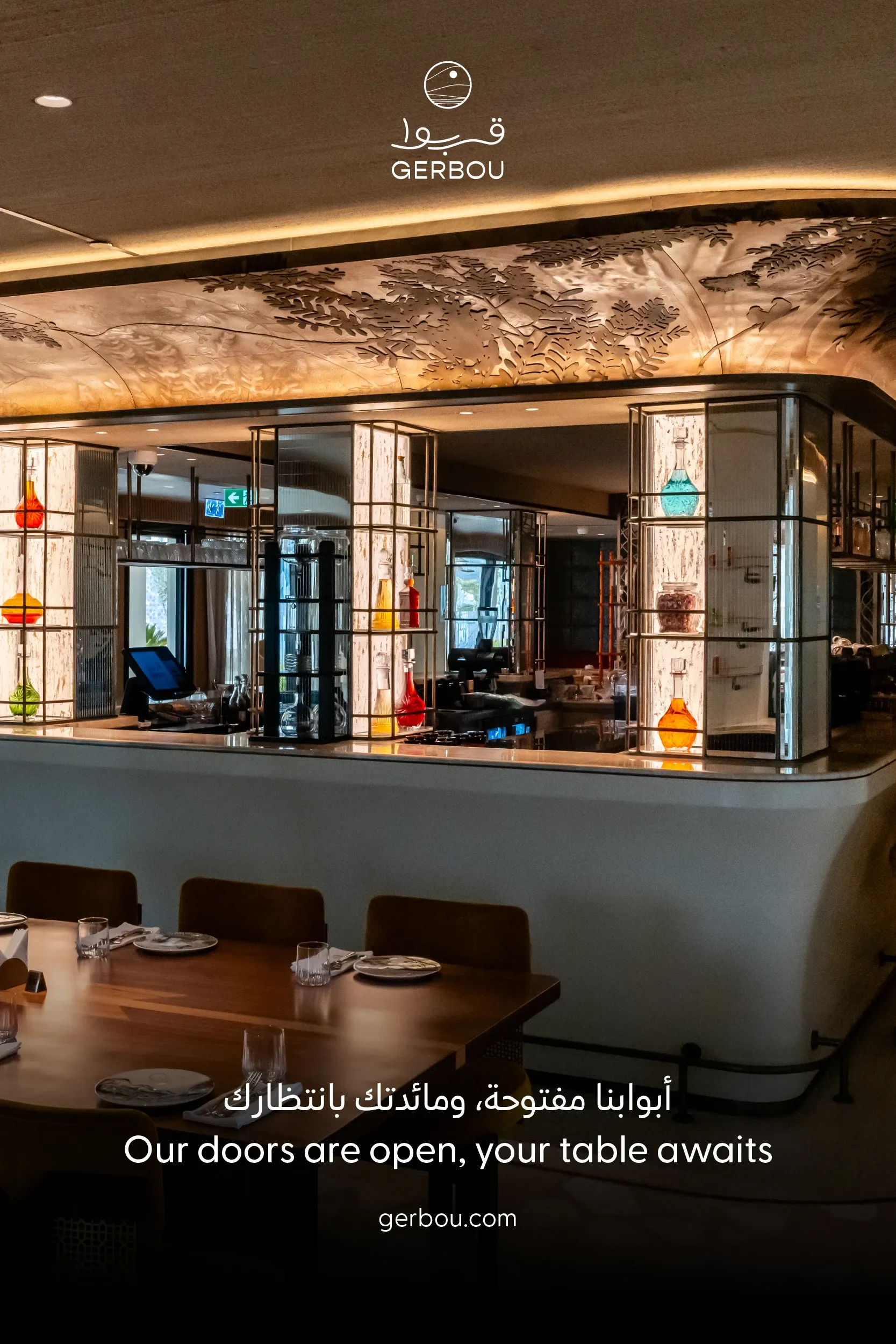
Exhibition by Dubai’s Educator-Artists at Media One Hotel
A vibrant, free gallery showcasing diverse mediums, from photography to ceramics-celebrating creativity and community in the heart of Media City until 2 July.
Located in the heart of Media City, the lobby of Media One Hotel is currently hosting a free and accessible art exhibition in collaboration with the Dubai Art Teachers Network. Open to the public until Wednesday 2 July, the gallery brings together a group of artists who also work as educators across Dubai, offering a rare glimpse into their personal creative practices outside the classroom.
The exhibition is curated by Lilian Mackey and Alexandra Bolshakova, both working artists and experienced art educators. Their aim is simple: to give teacher-artists a platform to share their work with the wider community, and to show that creativity continues well beyond the school setting.
Visitors to the gallery will find a broad mix of mediums on display, including photography, painting, ceramics, textiles, and mixed media. Each piece reflects the individual approach and artistic interests of its creator, all of whom balance their own studio practices with full-time teaching roles. The work on view is varied and honest, offering insight into how educators continue to engage with their craft while also guiding the creative development of others.
The cover image features artwork by Lilian Mackey one of the curators of the exhibition. Mackey is a Northern Irish artist whose work is grounded in the quiet power of ritual, language, and material memory. Her use of stitched idioms and cultural phrases reflects how language is passed between generations, held, repeated, and reinterpreted over time.
Mackey's practice draws deeply from her heritage, where the domestic ritual of tea-making is not just an everyday act but a gesture of comfort, hospitality and conversation.
Mackey works with familiar and often fragile materials such as teabags, antique linens, dissolvable fabric, and lace, transforming them into symbolic vessels for memory and meaning. Tea serves not only as a medium, dyeing and softening surfaces, but also as a metaphor for shared experience.
Alexandra Bolshakova is a painter and multidisciplinary artist. Her artwork explores contemporary figurative themes through expressive colour and dynamic mark-making.
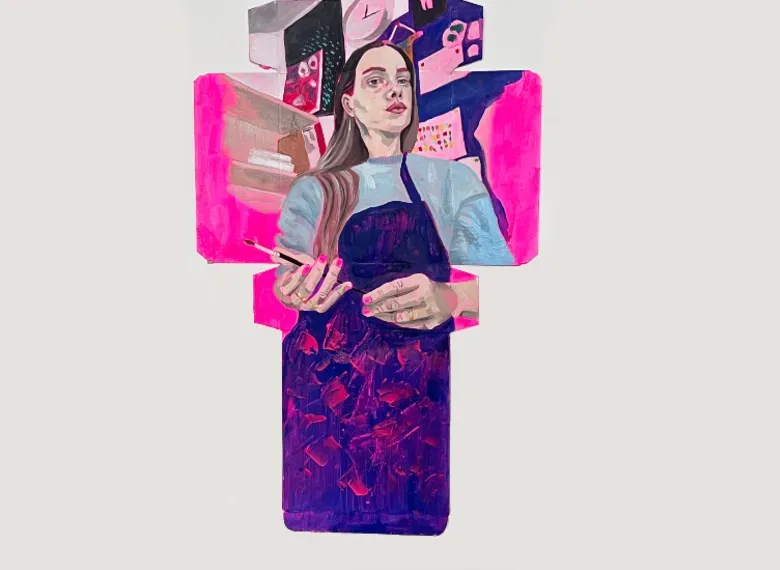
Art in the Middle (AITM): Can you tell us what inspired the pieces you are showing?
Alexandra: My work explores the space between artistic ambition and the structures that gatekeep legitimacy. I’m interested in what qualifies as a “real” artist and who decides. I challenge these ideas through quiet, labour-intensive acts: embroidering rejection letters and painting intimate oil portraits on Yorkshire Tea boxes. The tea boxes are personal—they reflect my British mixed heritage and speak to everyday life, class, and identity. Painting on them instead of canvas makes the work more accessible while questioning traditional art materials. The rejection letters became a material in themselves—a way to make failure visible, even beautiful. Together, these pieces reflect the quiet resilience of trying to sustain a creative practice alongside a full-time job.
AITM: What do you hope guests take away from seeing your work in this setting?
Alexandra: I hope guests feel a sense of connection, to the everyday materials, the vulnerability behind each piece, and the broader questions about who gets to be seen and valued in the art world. Showing this work in a non-traditional space invites reflection on how art can exist beyond galleries, and how creativity often persists quietly, alongside real life.
Hakan Erkam is a multidisciplinary artist, sculptor, and photographer known for his exploration of human resilience, displacement, and environmental transformation. His artistic practice spans oil painting, sculpture using reclaimed materials, and photography, with each medium serving as a way to document and reinterpret contemporary struggles.
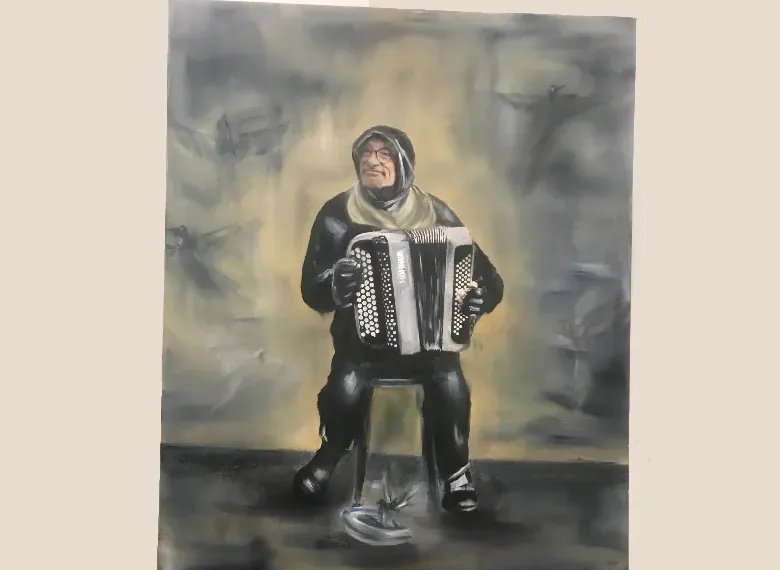
AITM: What drew you to take part in this showcase at Media One Hotel, and how does the space influence how your work is presented?
Hakan: What appealed to me about this showcase is that it brings art into a more relaxed, unexpected space. I’ve always believed that art shouldn’t feel distant or exclusive. Showing my work in a hotel, where people are going about their day, allows for these quiet, surprising moments of connection. It makes the experience more honest and open. The setting changes how the work is seen. It invites a different kind of conversation, often more personal and spontaneous.
AITM: How does the medium you’ve used help express the story or message behind your work?
Hakan: I’ve always been drawn to stippling. It’s a slow, meditative process where every dot counts. It reflects how memory and meaning are built up over time, bit by bit. There’s something about that patience that fits the kind of stories I’m trying to tell. With oil painting, it’s about texture and layering. I like that I can push and pull the image, add emotion, scrape things back, and let earlier marks show through. It feels like working with the past and present at the same time, which is often what my work is about.
Gareth Pyper holds a master's in fine art and spent his twenties immersed in the cultural melting pot of Camden Town, London. The street art, live music, and creative chaos of Camden deeply influenced his visual language, laying the foundation for a practice rooted in bold expression and urban energy. His piece on show is titled after the postcode for Camden Town, NW3, a visual tribute to the colour, attitude, and movement of the streets that shaped his early artistic voice.
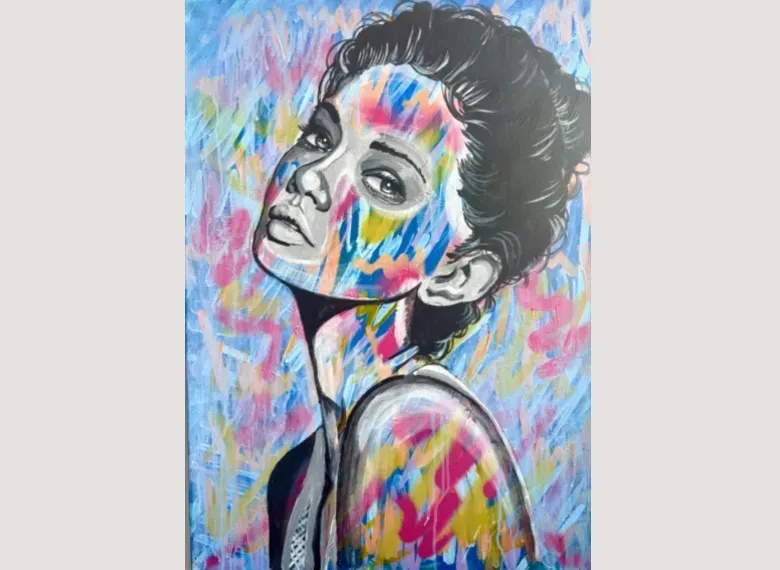
AITM: What drew you to take part in this showcase at Media One Hotel, and how does the space influence how your work is presented?
Gareth: This is my first year living and working in Dubai, and being part of this showcase has been a brilliant way to connect with other educators who are also actively practising artists. It’s inspiring to share this experience with such a creative and passionate group. The setting of Media One Hotel couldn’t be more perfect; it has such a cool vibe and aesthetic that really complements contemporary art. The energy of the space elevates the art and makes it feel right at home.
AITM: What do you hope guests take away from seeing your work in this setting?
Gareth: I hope people feel the energy and edge in the work, like it’s something lifted from the street and dropped straight into the gallery. NW3 isn’t just about a place, it’s about a feeling: movement, noise, culture layered on top of culture. Showing it in a space like Media One, with its bold aesthetic and creative buzz, really enhances that. If someone walks away feeling curious, inspired, or even just a bit of that Camden spirit, then it’s done its job!
Chelsea Cooney has a background in ceramics to master’s level and brings a tactile sensitivity to all her visual work. In Dubai, she is drawn to the city’s constant state of construction and transformation. Her practice celebrates the journey of creation, revealing the hidden beauty within the process of something new emerging.
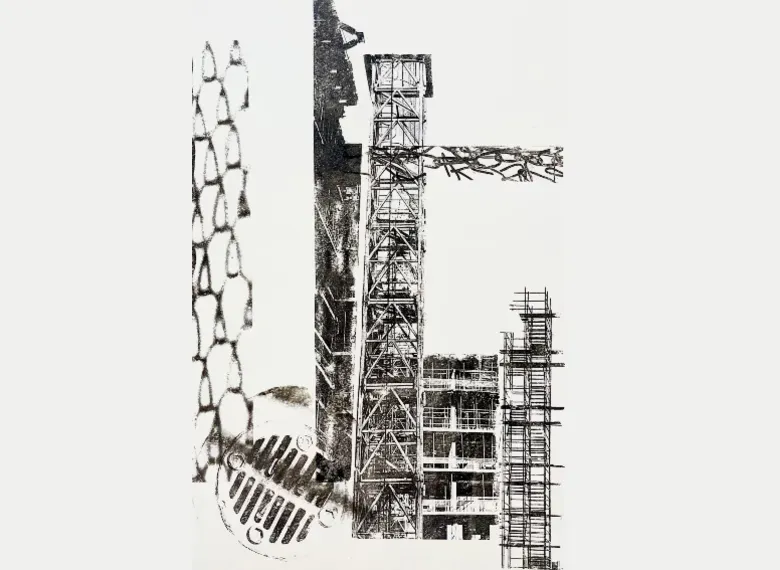
AITM: Can you tell us what inspired the piece you're showing?
Chelsea: Urban Skeletons was born out of my fascination with Dubai’s ever-shifting skyline. Rather than being captivated by the city’s glittering surface, I found myself drawn to the scaffolding, cranes, and exposed frameworks that quietly shape its evolution. These sites, often seen as eyesores or temporary messes, hold a raw kind of poetry for me. They represent potential, transition, and resilience. In many ways, the series is also a personal metaphor, an acknowledgement that growth isn’t always linear or polished. It’s about honouring the structures that hold things up while they are becoming, whether that’s a city or a person. I want the viewer to pause and reconsider what progress looks like, and to appreciate the stages we so often rush through or ignore.
AITM: How does the medium you've used help express the story or message behind your work?
Chelsea: Photography was a natural choice for this series, not only for its immediacy but for its associations with memory and value. We typically use photographs to document milestones-moments we want to preserve, cherish, or celebrate. By applying this same medium to scenes of scaffolding and steel skeletons, I’m elevating what’s usually ignored. I’ve also used an acetone transfer process, which adds a tactile, handmade quality to the images and softens the industrial subject matter. This technique allows for layering and imperfection, echoing the fragility and transience of the construction sites I’ve captured. My background in ceramics still influences the way I think about balance and form, and that sensitivity carries through in the way I compose each image. Ultimately, I want these works to feel quiet but deliberate—to offer a space for reflection on process, not just product.
Visit: @dubaiartteachersnetwork
Hayley is passionate about everything 90s, from art and fashion to music. Her love for glossy, artful coffee table books started early during her days in book publishing and has only grown since. She collects luxury magazines from around the world, enjoys exploring creative workshops around the city, and always chases dinners with a view, preferably by the beach.



